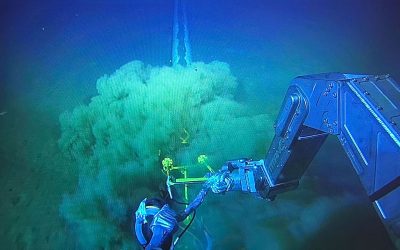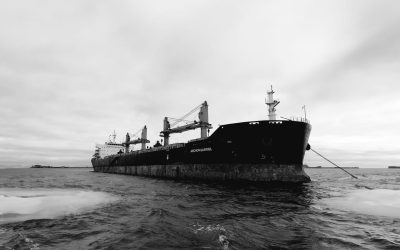Introduction
TSC Subsea was approached by a long-standing client, DeepOcean, acting on behalf of Repsol Norge AS, to conduct a diver-less, ROV-deployed inspection of multiple subsea pipe bends and T-sections of varying diameters. The inspection was to take place in the Yme field, situated approximately 100km off the coast of Norway.
The piping system formed part of Repsol’s jack-up rig Inspirer’s storage tank system, located at a water depth of approximately 75 metres. This platform was brought back into service in 2021 following a significant overhaul by Repsol, made possible through the use of new technology and innovation. The overhaul involved the reuse of existing infrastructure alongside the design and construction of new facilities. TSC Subsea, already known to the client from prior structural weld integrity assessments of the jack-up rig using its Alternating Current Field Measurement (ACFM) scanners, was called upon to determine if they had a suitable solution.
Challenges
The primary objective of the inspection was to detect internal and external degradation caused by erosion, abrasion and corrosion in 10 pipe elbows and T-sections designated by the client. These pipes ranged in diameters of 152mm (6in), 203mm (8in), and 812mm (32 in), with nominal wall thicknesses between 7mm (0.28in) and 12.7mm (0.5in). Demonstrating a proactive approach to asset integrity, Repsol requested additional scans on the straight sections of pipe tangency preceding and following each bend. These scans were required to extend a distance equivalent to twice the pipe diameter, meaning a 152.4mm (6in) bend would require an additional 300mm (12in) scan of the adjoining straight sections.
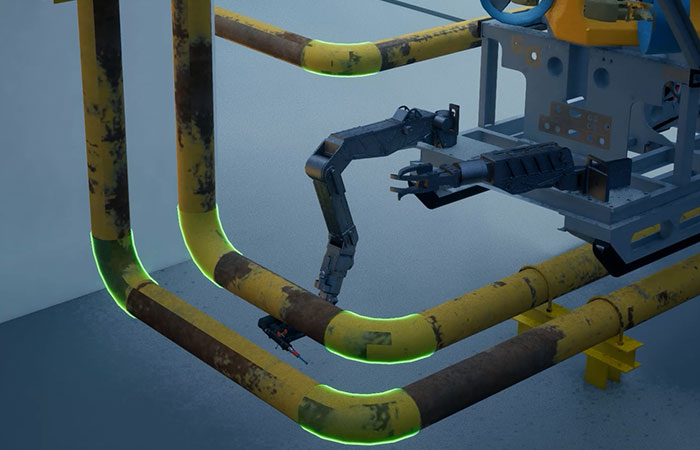
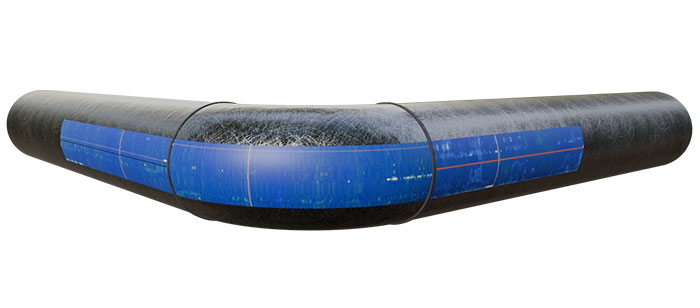
TSC Subsea proposed the use of its Subsea Phased Array (SPA) ultrasonic technology to produce scans on the extrados (outer radius) of the bends.
Subsea pipe bends are critical components of piping systems, acting as essential connection points between main and branch pipelines while directing the flow of internal products.
However, due to high turbulence and fluid velocity, these sections are particularly vulnerable to erosion and corrosion, especially at points where the pipe changes direction or bends. Such sections represent common weak points in pipelines, where material degradation can result in stress-induced cracks, leaks, or even ruptures.
Subsea bends are inherently challenging to inspect with robotics due to their complex geometry, the addition of fittings and supports, and the limited capabilities of many scanners and technologies.
Solution
TSC Subsea offers a comprehensive range of advanced Non-Destructive Testing (NDT) technologies and robotic scanners designed to meet diverse subsea inspection requirements. For this specific project, where access to some pipe bends was limited, the customised LineScanner equipped with Phased Array Ultrasonic Testing (PAUT) probe was identified as the optimal solution.
Magnetic Robotic Crawler
The LineScanner is a motorised system specifically designed for inspecting ferrous and non-ferrous subsea pipe bends. It incorporates an internal encoder for precise distance measurement and can be deployed onto the pipe bend using an ROV. Once positioned, the scanner autonomously clamps onto the pipe surface—either mechanically for non-ferrous materials or, in this case, magnetically for ferrous pipes. The angle of the wheels and magnets is carefully calculated to ensure the scanner naturally travels along the extrados.

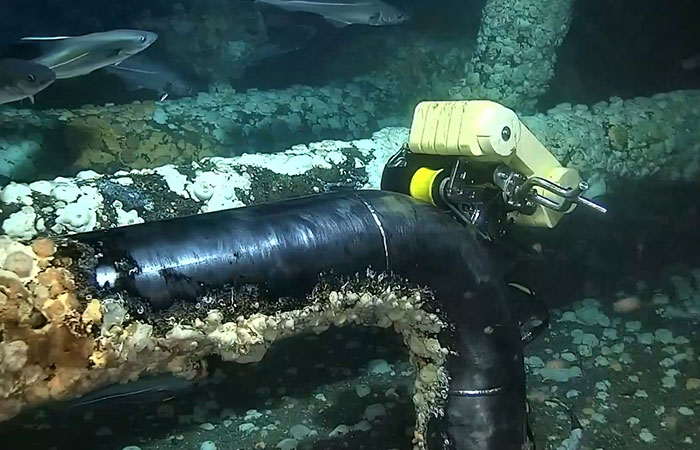
To account for the geometry changes in the bend, the probe mounting mechanisms automatically protrude and retract, maintaining the correct probe pressure to ensure high-quality data. This automated capability ensures efficient and streamlined inspections, even in challenging environments.
The SPA probes provided superior inspection capabilities for detecting wall thickness reductions caused by corrosion, abrasion, or erosion. Utilising a high-resolution ultrasonic beam spanned 25mm (0.98 inches) and collected A-Scan data at intervals as small as 0.5mm (0.02 inches), the system ensured 100% coverage of the designated inspection area.
Factory Acceptance Test (FAT)
Before offshore deployment, a Factory Acceptance Test (FAT) was conducted at TSC Subsea’s Swansea, UK facility, which features a purpose-built water tank to replicate underwater conditions. Custom replicas of the pipe elbows were fabricated to mimic field conditions, incorporating a 90-degree bend, a 1.5D centreline radius, and short straight pipe sections welded to both ends. Manufactured defects were introduced to the internal surfaces to validate the detection capabilities of the scanner and SPA system. Representatives from DeepOcean and Repsol attended the FAT, which successfully demonstrated the system’s performance.
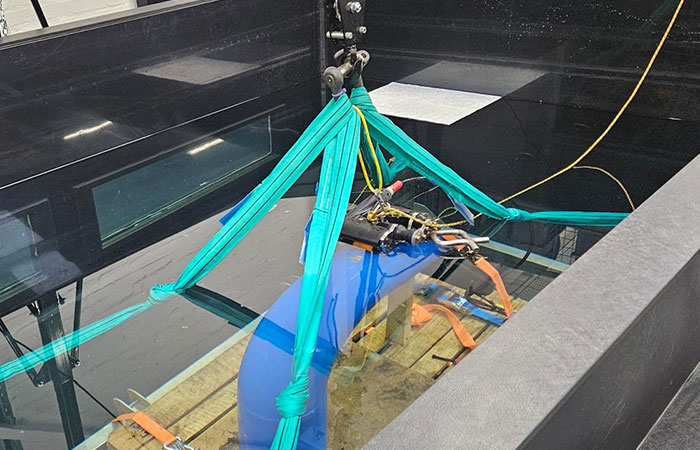
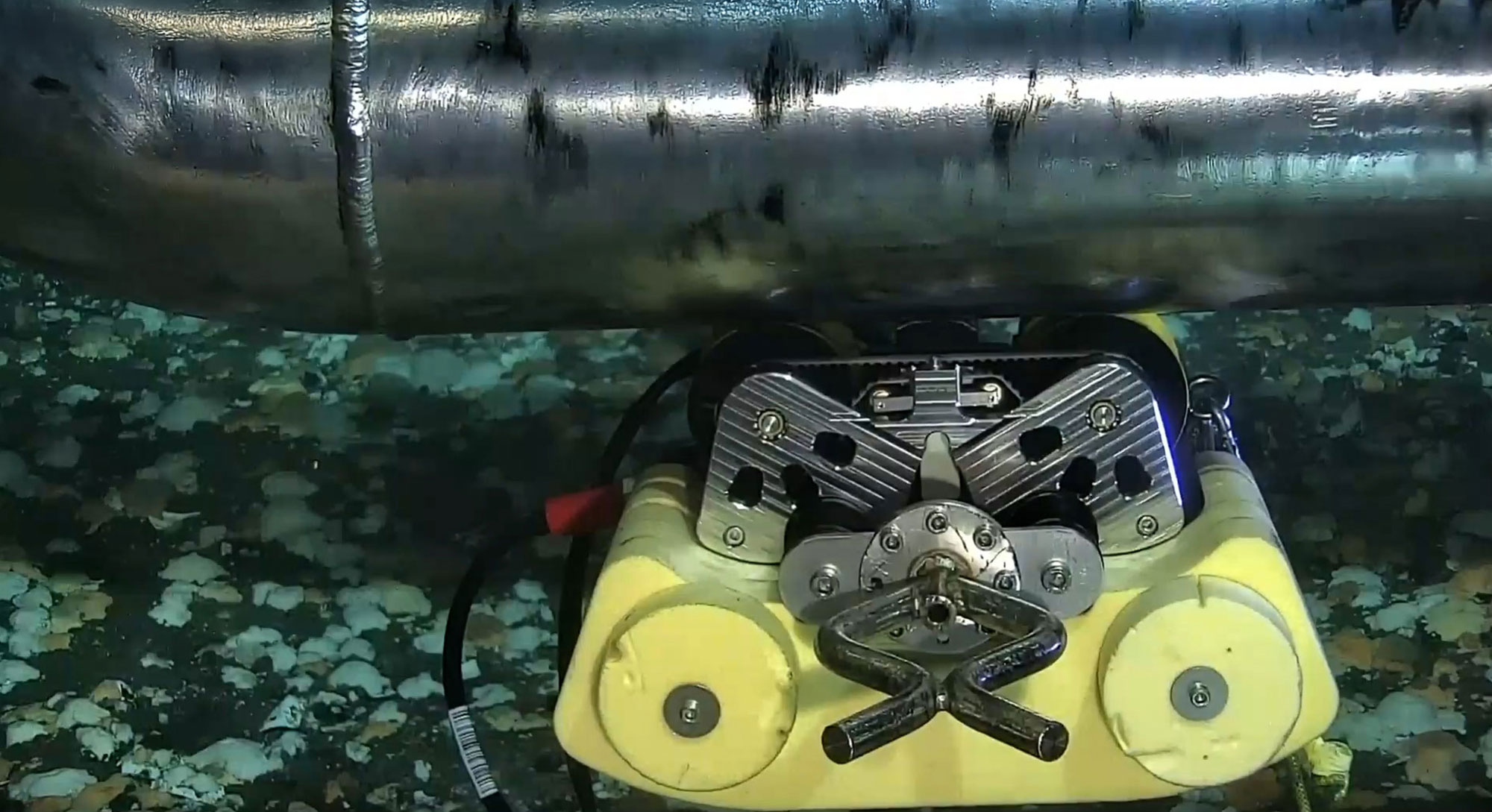
Offshore Deployment
Two weeks later, the offshore inspection campaign commenced. A TSC Subsea team, including two PAUT Level 2 NDT Technicians and a robotics engineer, mobilised for the operation. Before scanning, the ROV team prepared the inspection sites by cleaning the pipe surfaces and surrounding areas to an SA2.5 standard. This preparation ensured a smooth and clean surface for optimal probe contact and secure magnetic attachment of the scanner. TSC Subsea technicians confirmed the cleaning met all standards required for SPA inspection before proceeding with deployment and scanning.
Result
The TSC Subsea team conducted thorough on-deck function checks of all systems prior to deployment to ensure optimal performance. SPA thickness measurements were calibrated using a known reference source to guarantee accuracy during the inspection process.
At the inspection site, DeepOcean’s skilled ROV pilot navigated to the designated location and positioned the scanner on the side of the pipe. Once the scanner magnetically attached to the surface, the ROV disengaged and retreated to a safe distance to monitor the operation.
From the safety vessel’s control room, the TSC Subsea operator remotely controlled the scanner, driving it along the straight section followed by around the extrados of the pipe bend while monitoring real-time SPA data. Once the NDT technician was satisfied with the data, the ROV pilot moved the scanner to the next location.
While some areas required shorter scans due to the proximity of pipe supports or other physical obstructions, the team successfully completed 72 scans in total within just four days, making the process efficient and sustainable.
TSC Subsea deployed the most advanced phased array systems available, ensuring a reliable and accurate subsea inspection. This highlights the exceptional accuracy of the phased array system used, with a detection capability of ±0.5mm.
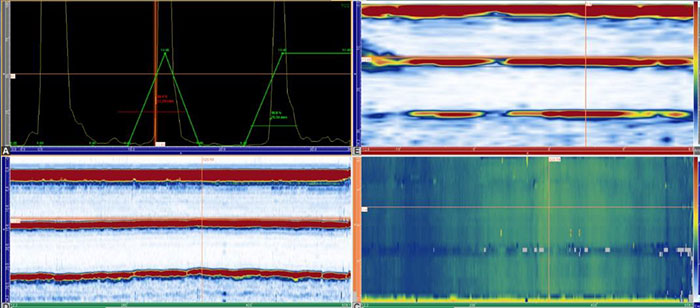
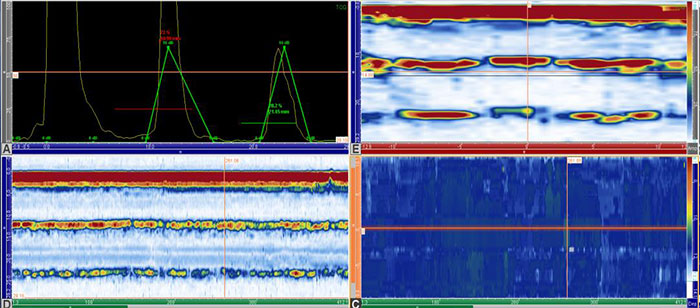
Conclusion
The inspection confirmed the integrity of the inspected sections. The integration of robotics with phased array technology enables highly repeatable inspections, facilitating future comparisons to monitor trends and ensure long-term asset integrity.
Key Benefits of Utilising Robotics and Phased Array in Subsea Bend Inspection
- Diverless & Safe – No divers needed, reducing risk.
- High Accuracy – Detects ±0.5mm wall loss with 100% coverage.
- Time-Efficient – 72 scans in four days, delivering fast and effective results.
- Reliable & Repeatable – Ensures consistent data for future monitoring.
- Cost-Effective – ROV deployment lowers the overall inspection cost.
